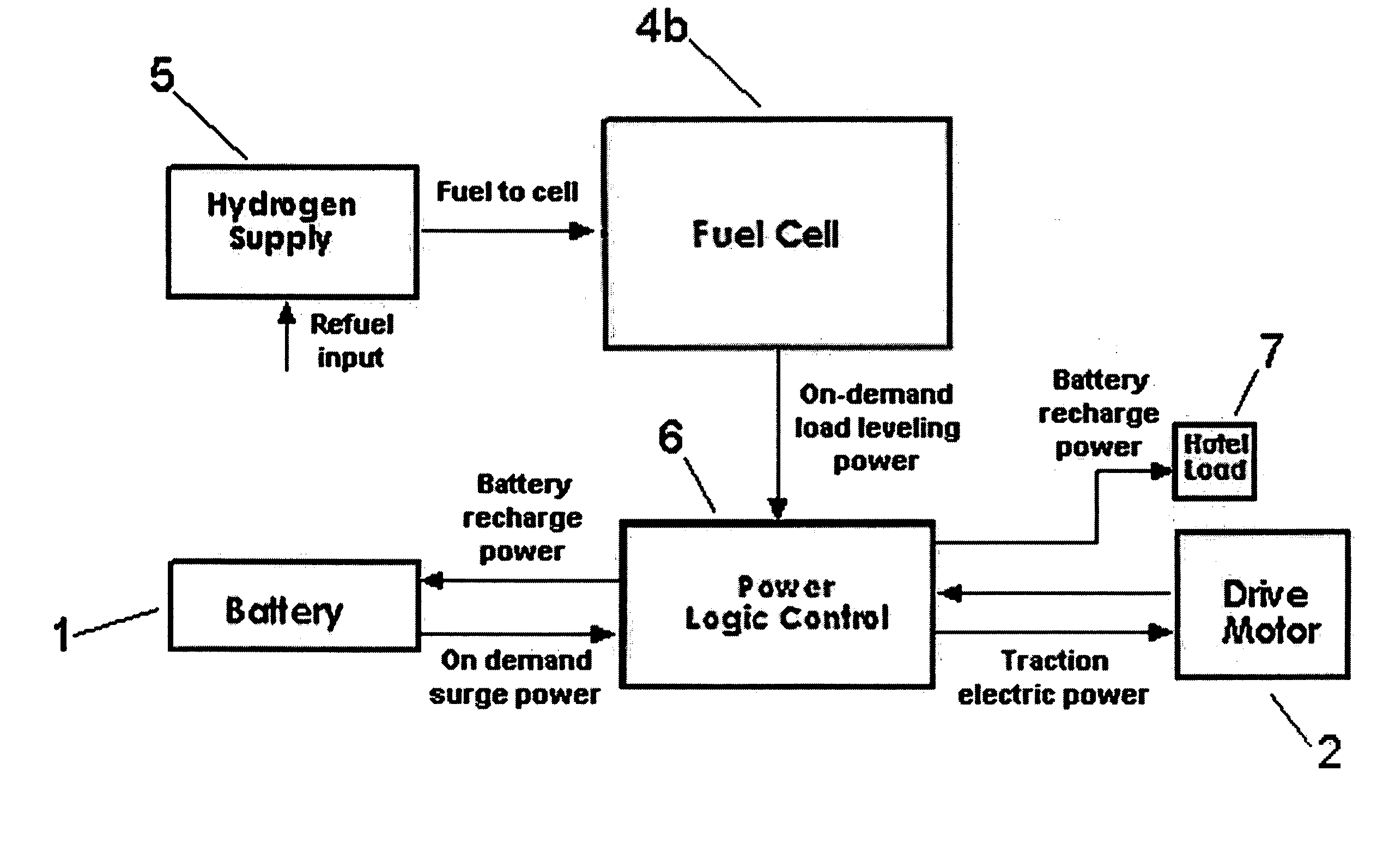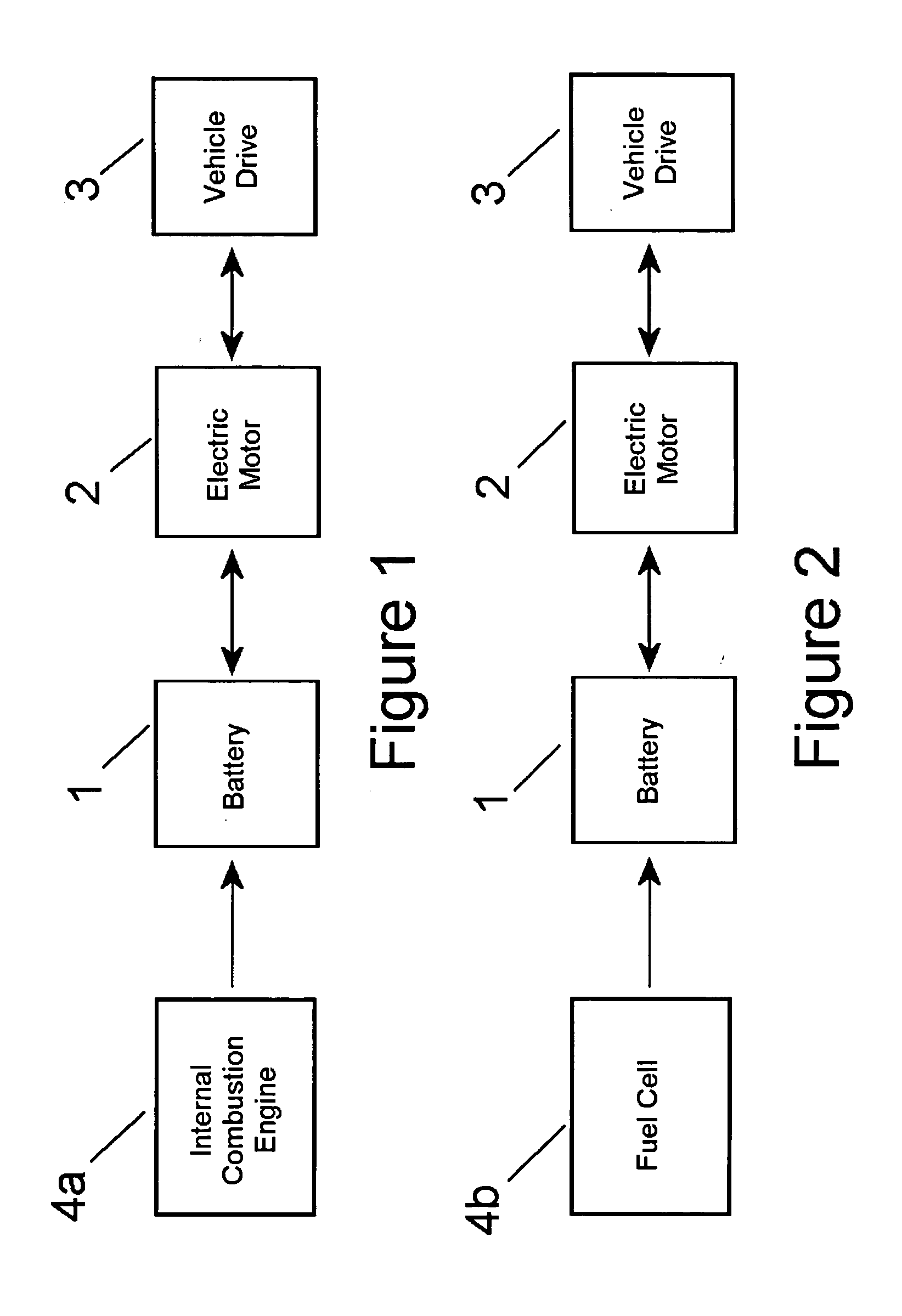Drive system incorporating a hybrid fuel cell
a hybrid fuel cell and drive system technology, applied in the field of fuel cells, can solve the problems of fluctuating energy costs, unstable economic stability, and constant movement of the global energy system
- Summary
- Abstract
- Description
- Claims
- Application Information
AI Technical Summary
Benefits of technology
Problems solved by technology
Method used
Image
Examples
example 1
A hybrid hydrogen-oxygen alkaline fuel cell in accordance with the present invention was constructed and tested. The hybrid hydrogen-oxygen alkaline fuel cell included a cathode, two anodes, and an auxiliary electrode. One of the anodes was constructed to operate with the cathode as a fuel cell and the other anode was constructed to operate with the auxiliary electrode as a battery.
The cathode for the hybrid hydrogen-oxygen alkaline fuel cell was prepared by first depositing the gas diffusion layer composed of 45 weight percent teflonated carbon (acetylene black Shawinigan AB) onto a current collector grid. Approximately 6-10 g of gas diffusion layer material was deposited onto the current collector grid per 100 cm2. The active material layer composed of 20 weight percent teflonated carbon (Black Pearl 2000, trademark of Cabot Corp.) was then deposited onto the gas diffusion layer. Approximately 2-3 grams of active material layer material is deposited onto the gas diffusion layer...
example 2
A hybrid metal air fuel cell in accordance with the present invention was constructed and tested. The hybrid metal-air fuel cell included a cathode, an anode, and an auxiliary electrode. The anode was designed to operate with the cathode as a fuel cell and operate with the auxiliary electrode as an battery.
The cathode for the hybrid metal-air fuel cell was prepared by first depositing the gas diffusion layer composed of 60 weight percent teflonated carbon (Vulcan XC-72) onto a current collector grid. Approximately 6-10 g of gas diffusion layer material was deposited onto the current collector grid per 100 cm2. The active material layer composed of 20 weight percent teflonated carbon was then deposited onto the gas diffusion layer. Approximately 2-3 grams of active material layer material is deposited onto the gas diffusion layer per 100 cm2. After depositing the gas diffusion layer, a second current collector grid is placed on top of the active material layer to complete the cath...
PUM
 Login to View More
Login to View More Abstract
Description
Claims
Application Information
 Login to View More
Login to View More - R&D
- Intellectual Property
- Life Sciences
- Materials
- Tech Scout
- Unparalleled Data Quality
- Higher Quality Content
- 60% Fewer Hallucinations
Browse by: Latest US Patents, China's latest patents, Technical Efficacy Thesaurus, Application Domain, Technology Topic, Popular Technical Reports.
© 2025 PatSnap. All rights reserved.Legal|Privacy policy|Modern Slavery Act Transparency Statement|Sitemap|About US| Contact US: help@patsnap.com



